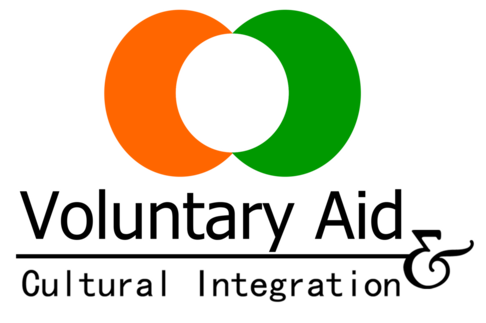Welcome to Ghana & the Volta Region
A Brief Background on Ghana
Ghana is approximately about the same size as Great Britain with a population of about 20 million people. The capital Accra is situated on the coast of Southern Ghana where the international airport is located. Colonized by the British the last of various European countries that invaded the Gold Coast and took over its governance but the first to arrive were the Portuguese in the late 1400s. They named the country the Gold Coast, which was its name until independence. During the years between the Portuguese discovery and independence, a lot of European countries fought for the power and supremacy of trade. They built forts and castles along the coast used as trade centers fighting headquarters. Many of these forts and castles are still here today.
The name “Gold Coast” was a collective description of the country’s great resources in gold and other natural resources. This led to the building of several forts and castles on the shores of the Gold Coast to facilitate trade, out of the sixty forts and castles along the coast of West Africa all but two are found in the Gold Coast. The slave trade one of the main atrocities committed by the European has an undying impact on cultural and social life of the people thus a pilgrimage for Africans in the Diaspora. Today the main exports are gold, cocoa and forest products.
Politically Ghana has one of the most stable medium of democratic governance though the road to this status was not easy but still the best record in politics in Africa. Nkrumah struggle for independence gave Ghana the first African country sub of the Sahara to gain independence on the 6th of March 1957 making him the first Ghanaian president. The current president is Prof. John Evans Attah Mills who came to power in 2009.
Southern Ghana has more rain than northern Ghana, resulting in more fertile land and a greener environment with forests. Northern Ghana on the other hand consists of Savannah landscape with a considerably lower living standard than the South; however Northern Ghana has short and drought resistant trees with large rocky outcrops. This landscape and traditional villages of the regions make it different from the southern parts of the country.
Demography
The population of Ghana as at the last population and housing census in 2000 up till dates over 20 million people. The country has ten regions and most of the population is concentrated in the southern part of the country, with the highest densities occurring in urban areas and cocoa-producing areas.
Ghana’s principal ethnic groups are the Akans 44%, Guans 3%, Ewes 13%, Dagombas 16%, Gas 8%, Gonjas 3%, Dagaabas 2%, Wala Fafras 3% European and others 1.5%.
There are around 70 Ghanaian dialects and languages. The official language of the country is English.
The population of Ghana comprises Christians (63%), Indigenous Beliefs (21%) and Muslims (16%). There is freedom of religion in Ghana.
Climate
Ghana has a tropical climate, characterized most of the year by temperatures between 21-32°C (70-90°F), constant breeze and sunshine. In the south here are two rainy seasons, from March to July and from September to October, separated by a short cool dry season in August and a relatively long dry season in the south from mid-October to March. Annual rainfall in the south averages 2,030 mm but varies greatly throughout the country, with the heaviest rainfall in the western region and the lowest in the north.
Health Care
Ghana has a reasonably good health service. All regional capitals and most districts have hospitals, polyclinics and clinics. Additionally, a number of religious organizations and private medical practitioners operate hospitals and clinics all over the country. Herbal medicine and psychic healing are also generally practiced, and there is a special government Herbal Medicine Hospital and Research Centre at Akwapim-Mampong.
Capital City – Accra
The capital of Ghana, Accra (pronounced ah-CRA) is a pleasant coastal city of over 5 million people. Start your sightseeing at the National Museum, which has a great collection of tribal art and ceremonial items – allow at least two hours. Next to the museum is a good crafts market, with paintings, prints and postcards for sale. If you’re in the mood for more craft shopping, stop by the National Cultural Centre, maybe the country’s best source for authentic souvenirs. The city’s most popular shopping centre is the Makola Market, a good spot to buy fabric. For more exotic items, seek out the Timber Market in the neighborhood known as Usher town. This market is known for its fetishes, African talismans and charms said to provide protection from various evil events. (The area where fetishes are sold is hard to find, so ask someone in the market to take you there.)
Black Star Square (also known as Independence Square) holds a memorial to three people who were shot during the struggle for independence. At the W. E. B. Du Bois Centre, you can see the grave of the U.S.-born civil-rights leader, as well as a library devoted to his philosophy of PAN-AFRICANISM. The OSU Castle houses the nation’s government – be aware that photographing it is illegal. After a hard day’s of sightseeing stop by the Osu Night Market for good food and a lively atmosphere. Or catch some music at one of the city’s equally lively nightclubs. If you want to escape the noise and hustle of the city, there are pretty beaches nearby – our favorites are Kokrobite and Tema. Kokrobite, in particular, is charming with white clean sand and an atmosphere that is calm and very peaceful. Try a pineapple from one of the peddlers on the beach (hold the leaves and eat the peeled fruit like a Popsicle) or, if you have a place to cook, buy one of the succulent local lobsters fresh from the fishing boats. This tiny Oceanside village also has some of the country’s liveliest drum and dance performances. The dances are held on weekends – sometimes they last an entire day. (Be aware that theft has been a problem on the beach in recent years.) Aburi, 20 mi/35 km north of Accra, has an excellent botanical garden, which can be seen on a day trip. Nearby are Akosombo Dam and the Tafo Cocoa Research Institute. 125 mil/200 km, south east of Kumasi.
Culture
Greetings
It is very important to greet people extensively before getting to business. Greetings include asking people about their family’s well being. Skipping the extensive greeting ceremony will be viewed as rude. Greeting a stranger will clear the atmosphere and incite a wide smile, especially in a local language.
Visiting
Visits to ill acquaintances will be greatly appreciated. In general, it is very common to regularly visit people you know. Greetings and regular visits are crucial for establishing good relations with people, a very important aspect of the Ghanaian culture; a feeling of love and appreciation.
African Time
You probably know that Africans are less bound to time than westerners are. Not many Ghanaians will announce visits but you have to create a room for acceptance. Ghanaians feel they are one and visitation is a key medium of showing love, a friend’s visit to a home means that more than two hours of laughter and food, merrymaking is surely going to be the centre of attraction.
Food & Eating
The culture of eating is very important in Ghana. If you pass people who are eating you will hear them say “you’re invited”. Ghanaians, especially women, are very happy when you appreciate their cooking. You will make them very happy to eat a meal with them (even if it is only few bites) and show your appreciation. Don’t smell the food, because this is very rude in Ghana. When you are staying with a host family, don’t eat outside too often, because they will think their food is not good enough for you.
Ghana Tourist Attractions
Apam
The wonderfully untouched fishing village of Apam lies between Accra and Elmina. Once you get past the fishing area, which may be polluted, you’ll find lovely, deserted beaches scattered with shells. Spend a night in the little fortress on the outside of town – its view of the colourful boats and the villagers is memorable. 55 mi/85 km west of Accra.
Boti Falls
A seasonal waterfall in the forest reserve at Huhunya. There is the Boti forest reserve that has several varieties of butterfly species and flowers in the wild an additional attraction is the “Umbrella rock” and the palm tree that reputedly has three trunks.
Cape Coast
We found Cape Coast to be a nice place to relax, lie on the beach and enjoy delicious seafood. It’s also a good base for drives along the coast or for visits to nearby Portuguese beach fortresses. In the city itself is the Cape Coast Castle, which has been modified for tourists (it has a gift shop and a restaurant). It’s an interesting place to visit and contains the grave of British poet Leticia Elizabeth Landon. More impressive is St. George’s Castle (in Elmina, 10 mi/16 km west of Cape Coast), which was built in the late 15th century. Once used as a base for the slave trade, the forlorn-looking castle lets on get a feel for the suffering of captured slaves. The guides who lead the tours through the castle are extremely knowledgeable, and their stories, combined with the setting, will send chills down your spine. Cape Coast hosts a major festival, the Pan African Historic Theatre Festival (also known as PANAFEST), in odd-numbered years. Music, dance, dramas and stage performances celebrate the cause of Pan-Africanism. Cape Coast is also a good base for visiting the lush rain forest of the Kakum Nature Reserve. It is 75 mil/120 km west of Accra.
Kakum Nature Reserve
This national park is constantly improving. Monkeys, elephants, antelope, leopards, warthogs and water buffalo roam 230 sq mi/700 sq km of protected forest. The Park has a canopy walkway, the only one of its kind in Africa and fascinating herbal plants and trees. While hiking along the Kakun Trail, we will learn about the various medicinal and practical uses of forest plant species. This tour through nature’s pharmacy also passes through some beautiful areas of the rainforest. Although park facilities are still limited, there is a good restaurant at the entrance, where you can spot animals while you dine. Guided walking tours set out in early morning and late afternoon. May-October is probably the best time to see animals in the park. It is 75 mil/120 km west of Accra.
Kumasi
Kumasi is the capital of the Ashanti might infer from its nickname, it’s a pleasant place to visit – plan to stay for two nights. See the Ghana National Cultural Centre, where artisans demonstrate traditional handicrafts, such as weaving, bronze casting and the making of palm wine. They also manufacture and display royal patterns of kente cloth. (A new pattern is designed for each chief.) On Saturday, the centre organizes traditional drum and dance performances. Across from the centre is the Okomfo Anokye Sword Hilt, a buried sword that marks the spot where the Ashanti’s mythical Golden Stool descended from the heavens. If you visit the Manhyia Palace, home of the Ashanti chief, take along a gift – you might be granted a royal audience. Souvenir hunters should head for the Central Market – it’s the largest in Ghana, and goods are often cheaper there than in Accra. Kumasi is 125 mi/200 km northwest of Accra.
Lake Volta
The Volta estuary is an area of great scenic beauty, with river and ocean beaches, and picnic spots shaded by palm trees. The sand bars are the nesting grounds for sea birds and endangered species of turtle are still found here. Important wetlands and breeding grounds exists for migratory birds along the Keta-Anloga Lagoon Basin. Created by the damming of the Volta River in 1966, Lake Volta is one of the world’s largest man-made lakes. Sometimes called “Volta Lake,” it stretches more than 325 mi/525 km and offers fishing and cruises. The dam, near the village of Akosombo, was a monumental project that was fraught with problems but now provides electricity for much of the country. It is 55 mi/90 km northeast of Accra.
Mole National Park
In northwest Ghana, Mole National Park sees relatively few people, which is what makes the wildlife viewing (lions, elephants, impalas, etc.) special. We think the best way to see the park is on one of the guided treks led by park rangers. (Expect to get close to elephants.) The best time to visit Mole is December-March because during the rainy season the vegetation gets thick and animals are hard to spot. While in the area, be sure to see the Larabanga Mosque. It’s said to be the oldest building in Ghana and is famous for its distinctive architecture, with projecting wooden posts. It is 270 mi/435 km northwest of Accra.
Larabanga
Larabanga is situated 10 miles (16 km) west of Damongo, in the northern region and only about 5 miles to the Mole National Park. It is a common believe that this mosque is the oldest mosque in Ghana. Even the present generation thinks it was built by God. The villagers built another mosque which is similar to the one on the stamp where they go to pray or worship daily. The so-called ‘God built mosque’ also houses a Holy Koran which also is believed to have descended from heaven. This holy book is read once in a year or so during a special ceremony. Many prominent Moslems from Ivory Coast where the people of Larabanga claimed to have migrated from visit the village for such a function. This same village has a stone which could not be moved away during the time the Wa-Sawla road was constructed. That is each time it was moved, it kept coming back so they had to leave it and divert the road somehow. This portion of the road is popularly known as Larabanga SS now.
Background on VACI’s Project Locations
Akatsi
This junction town is quite of a spectacle; located on the Accra-Aflao road it has natural ecology that will make one wonder at sight. The first point of interest is the john Klu Wildlife museum that has wide range of skin collections and trophy heads from various big game species shot by the late hunter after whom the museum is named.
The main attraction in Akatsi apart from the museum is the Bird Sanctuary which is home to several species of birds. More excitingly is an hour’s canoe tour on the small and quiet Lot or river around which the birds are found. This eco-tourist site is being supported by the Peace Corps and the Akatsi District Assembly.

** Map of Ghana showing the location of Denu in Red
Denu
Denu is the district capital of Ketu district of the Volta region of Ghana. Denu is a coastal belt with the sea stretching from Accra through Denu to Togo and to other neighboring countries. The rainy season here is longer and lasts to the end of September.
Ewes are the occupants of this stretch of coastal land. This tribe of Ewes form a part of the larger tribe of the Anglos found on the coast of the Volta region. The Ewes have a writing culture and is one of the cultural groups with a very sophisticated oral culture. This is woven around drums and other musical instruments. Thus most of its history, until quite recently, has been based on oral tradition with drummers as professional historians. According to oral tradition, the political history of Anglo has its genesis in the life story of a legend called Torgbui Agorkoli.
Ghanaians in general and the Volta region in particular are known to be welcoming and hospitable to strangers. Denu is as developing as the other towns in Ghana but the government has promised to spend more money on the Volta region of the country over the next few years. Denu is accommodating a few tertiary institutions.
Aflao
This typically chaotic border town is just a two minutes drive from Denu; it is the third largest town in the Volta region. This busy border town leads to Lome, Togo and a transit point for travelers to Benin and Nigeria.
Aflao is not without redeeming features, however, most obviously a variety of street food that’s second to non in Ghana. Wherever you go you’ll see women carry baskets full of crusty baguettes, betraying your proximity to a francophone country.
There are a lot of hospitals, clinics and laboratories. Drug stores are common in these two districts. The tap water in Denu is treated and clean but foreigners are recommended to boil this again or buy mineral water.



